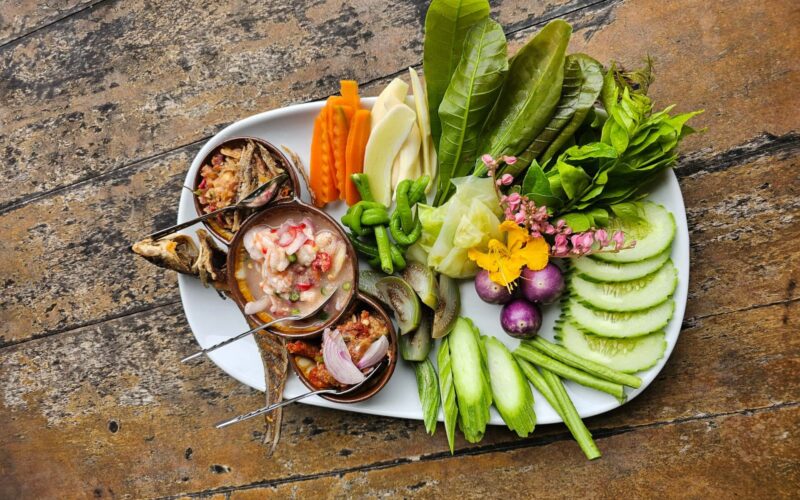If you want to pick the fruit, hurry up and take your share! These are beginning to ripen, and the others are already sprouting. With every downpour, your lovely valley changes, alas, and you cannot swim in the same river twice.
(a translated poem by Johann Wolfgang von Goethe)
One of the best things about travelling to distant Thailand is that you can enjoy a wide variety of fantastic fruits and ripe produce. These exotic fruits, some of which are also available on our shelves, are of course harvested ripe for sale here and therefore taste much better.
But when you stroll through the markets here and revel in the variety, you quickly realise that we are far from familiar with all the types of fruit available. And that's why I decided to eat my way through them – because a lot of them were new to me too. Naturally, this aroused my curiosity.
Thailand's wonderful world of fruit
Pineapple
We begin with a well-known fruit, the pineapple, which is popular not only in fruit salads, but also on pizza and in burgers (for whatever reason).
The main reason why some people don't eat fresh pineapple is because it contains the enzyme bromelain, which often causes an unpleasant burning sensation on the tongue. However, this is much less common in ripe fruit. That's why this aromatic fruit has become a regular afternoon snack for me.
Incidentally, baby pineapples are just as common here in Thailand as the normal-sized fruits – they are simply two different varieties.
Thai name: Sapparodt
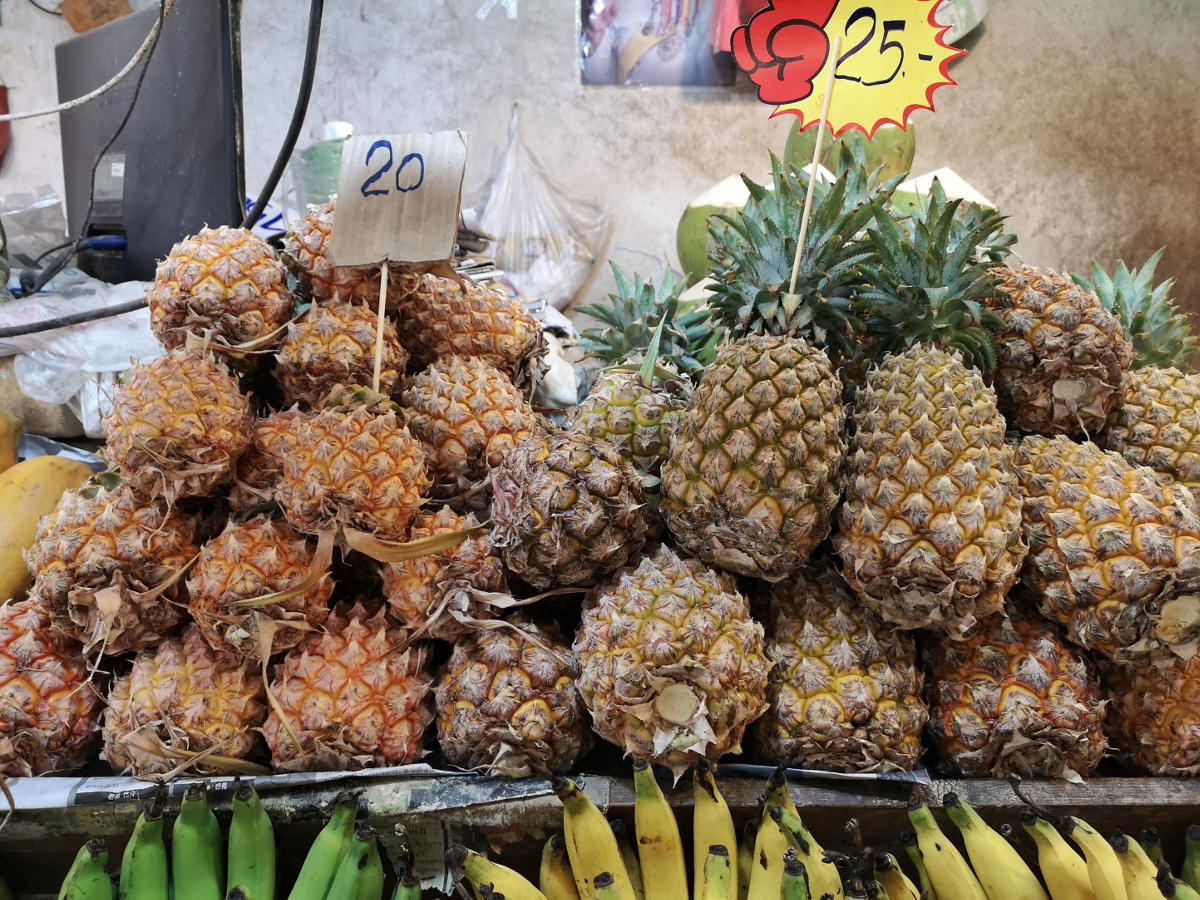
Mango
Mangoes are extremely popular in Thailand and are used both ripe and unripe. When ripe, they are very sweet and have an intense yellow skin. They are sold in pieces as a snack, but are also often used in the famous Thai dessert mango sticky rice (sweet sticky rice topped with coconut milk and garnished with ripe mango).
The green fruits are unripe and are used in salads, for example. When eaten raw, they are sprinkled with chilli salt – a very refreshing treat on hot days!
Thai name: Ma Muang

Pitahaya (dragon fruit)
One of my favourite Thai fruits is dragon fruit, which not only tastes wonderfully refreshing and not too sweet (actually without much taste of its own), but is also visually appealing. In my opinion, it's the prettiest fruit ever! 😍
Dragon fruit is particularly popular in smoothies here in Thailand and is highly recommended (in combination with mango, mmmmm). You can hardly feel the small black seeds when eating it, and they have no taste.
Preparing the fruit is easy: Cut it open and scoop it out, or peel it and cut it into pieces.
The flesh can be white or bright pinkish-red – there is hardly any difference in taste, they are simply two different varieties.
Thai name: Kaeo Mangkon


Mangosteen
The mangosteen is known as the king of fruits in Thailand. Although its name suggests otherwise, it has absolutely nothing to do with mangoes and tastes more like a lychee with a slight hint of coconut. It has no stone and its flesh is divided into segments that can be easily separated, similar to a mandarin.
Thai name: Mangkut

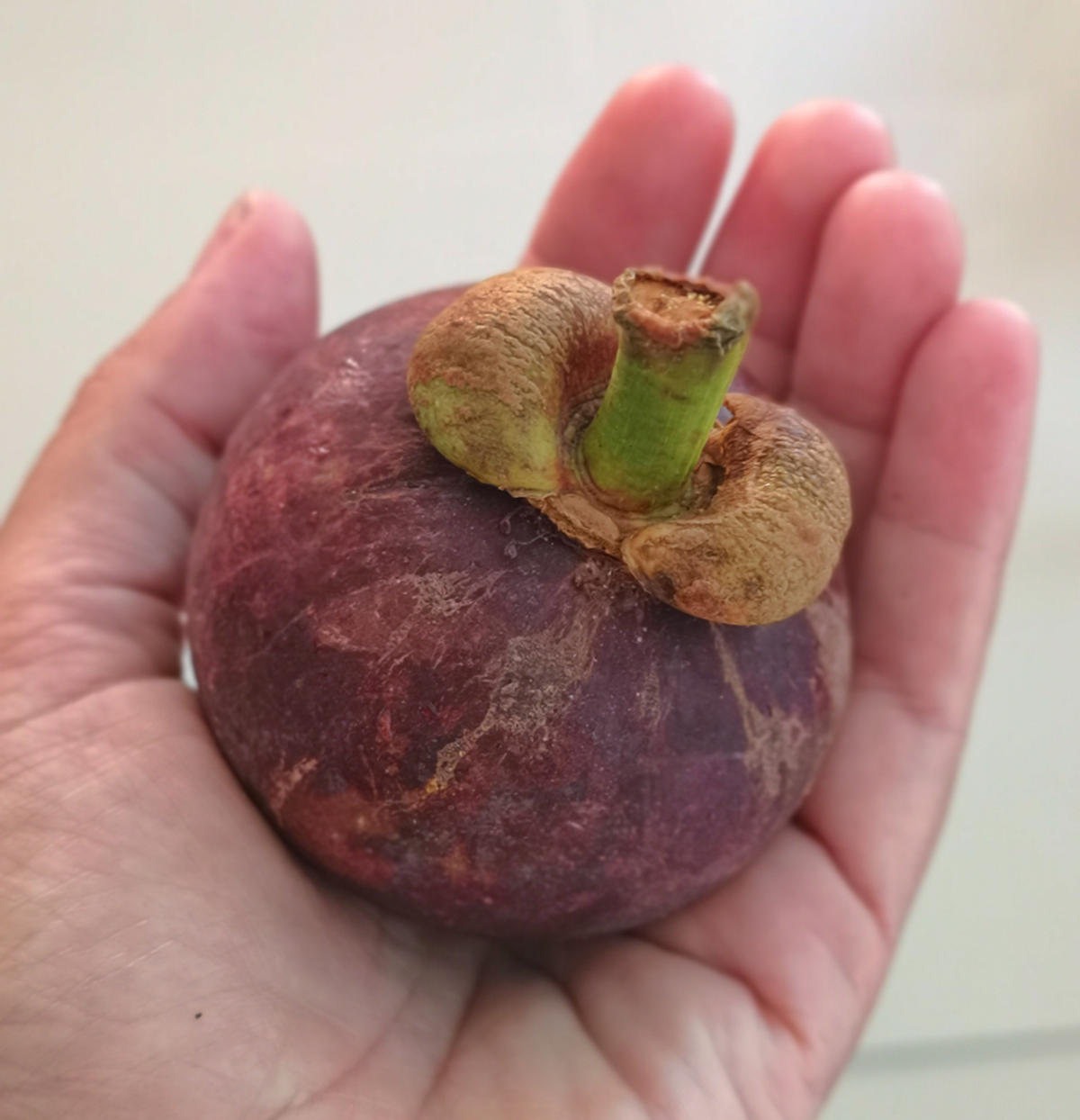
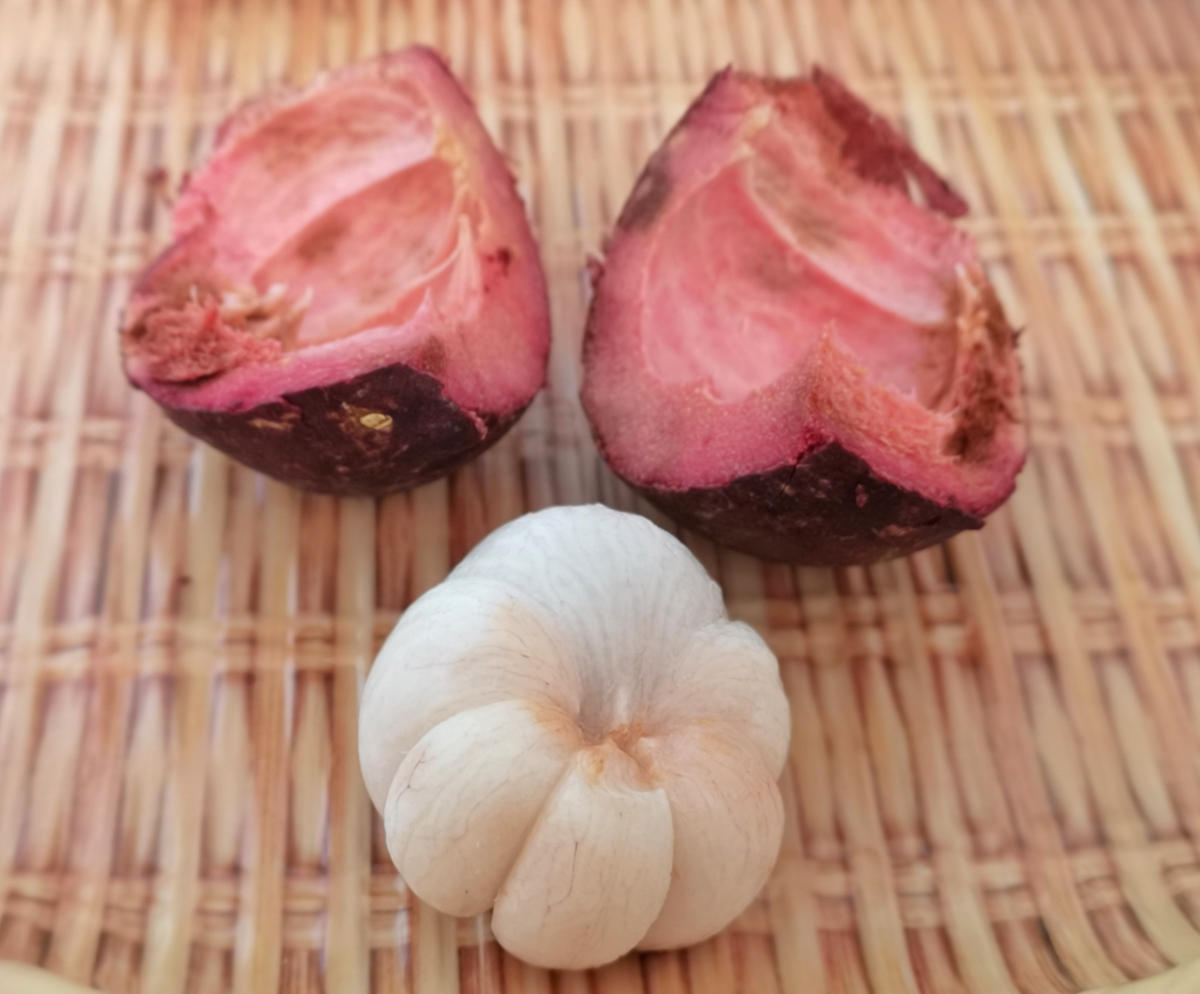
Guava
Like mangosteen, I also tried guava for the first time in Thailand. It has a similar consistency to an apple with a slightly mealy mouthfeel.
The great thing about guava is its slightly tart, herb-like, refreshing taste, especially on very hot days. In Thailand, it is often eaten with chilli salt (like unripe mangoes) or with a chilli dip. It is cut open like an apple and then eaten slice by slice.
Thai name: Farang
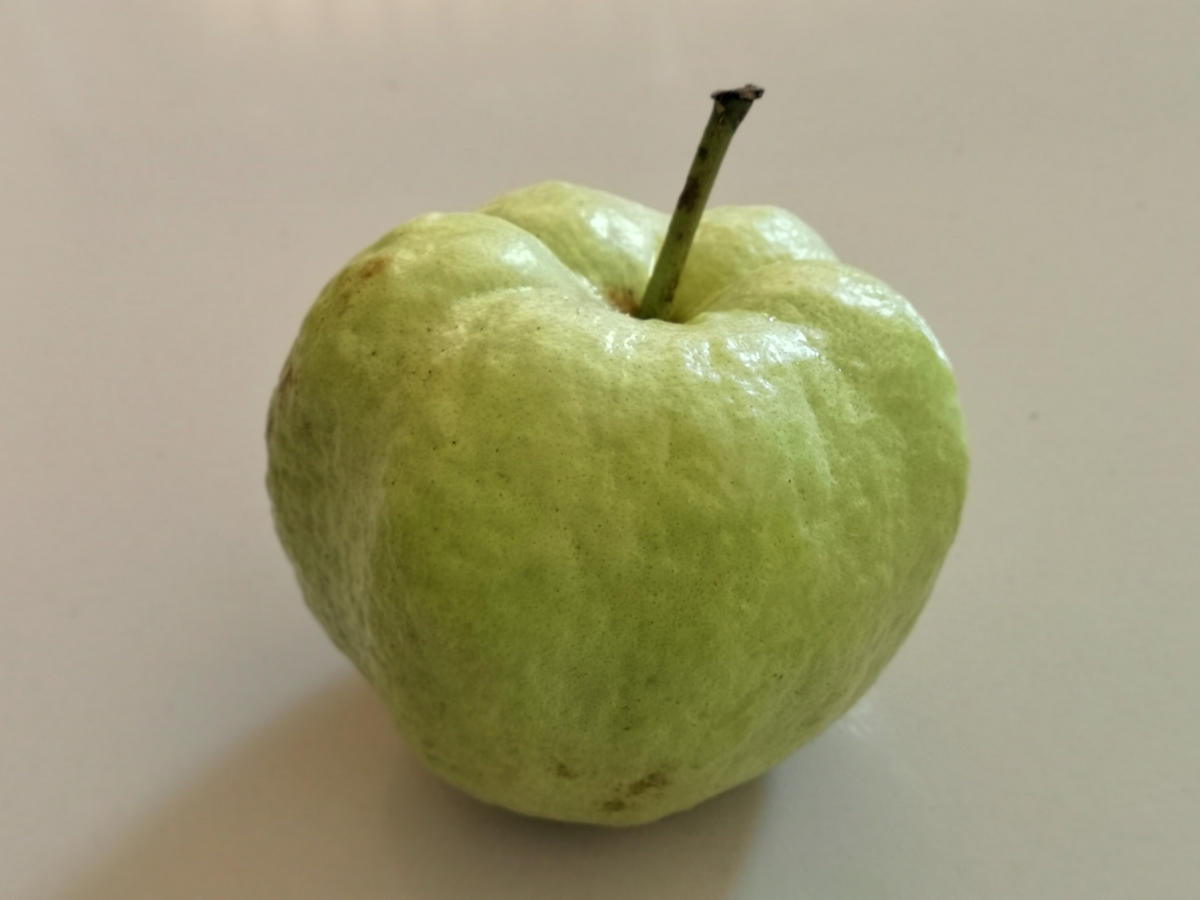
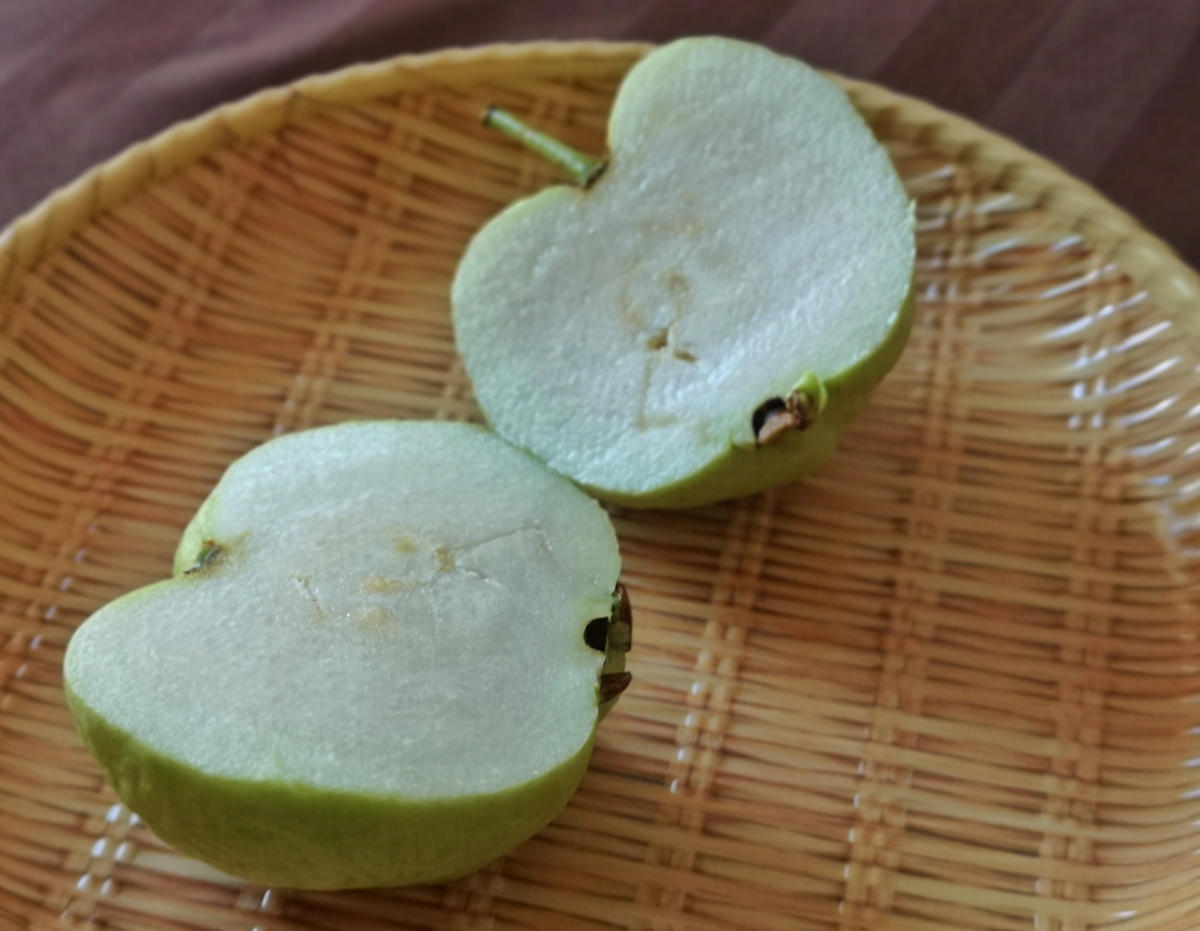
Passion fruit
The passion fruit is not exactly the most beautiful fruit you can buy at markets in Thailand. It is about the size of a child's fist and has a rather hard, slightly wrinkled skin. When you cut it open, the flesh is slightly jelly-like, yellowish and studded with seeds, which you can simply eat along with the fruit.
Passion fruit can be eaten simply as a refreshing, tart fruit or used in a smoothie. A special tip is a passion fruit mojito, which involves stirring the pulp of one or two passion fruits into a delicious mojito. This cocktail is not available everywhere. But if you'd like to try it, simply buy some passion fruits at a fruit shop or market and bring them to the bar. The bartenders will be happy to mix them in for you, sometimes laughing in disbelief, but after the first taste, they'll be hooked! 😄
Thai name: Saowarot
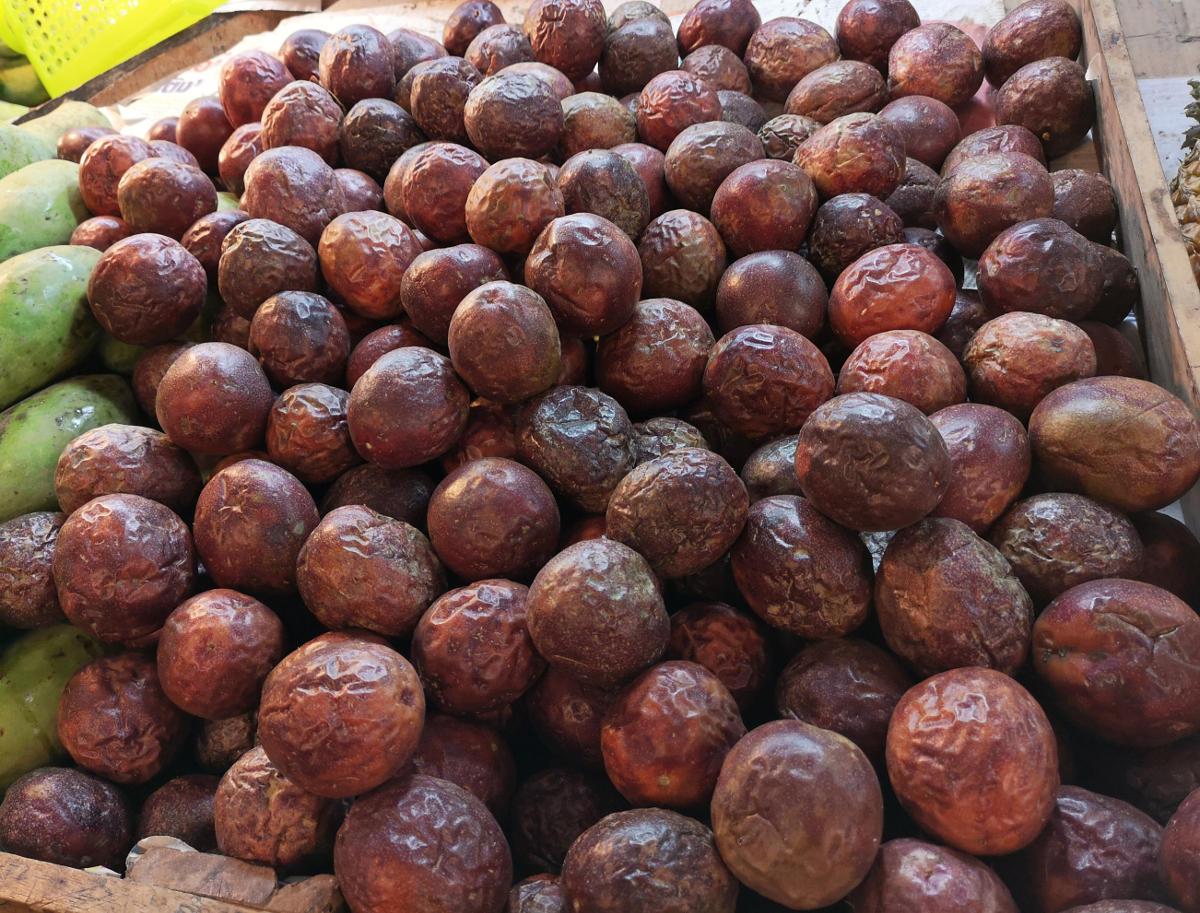
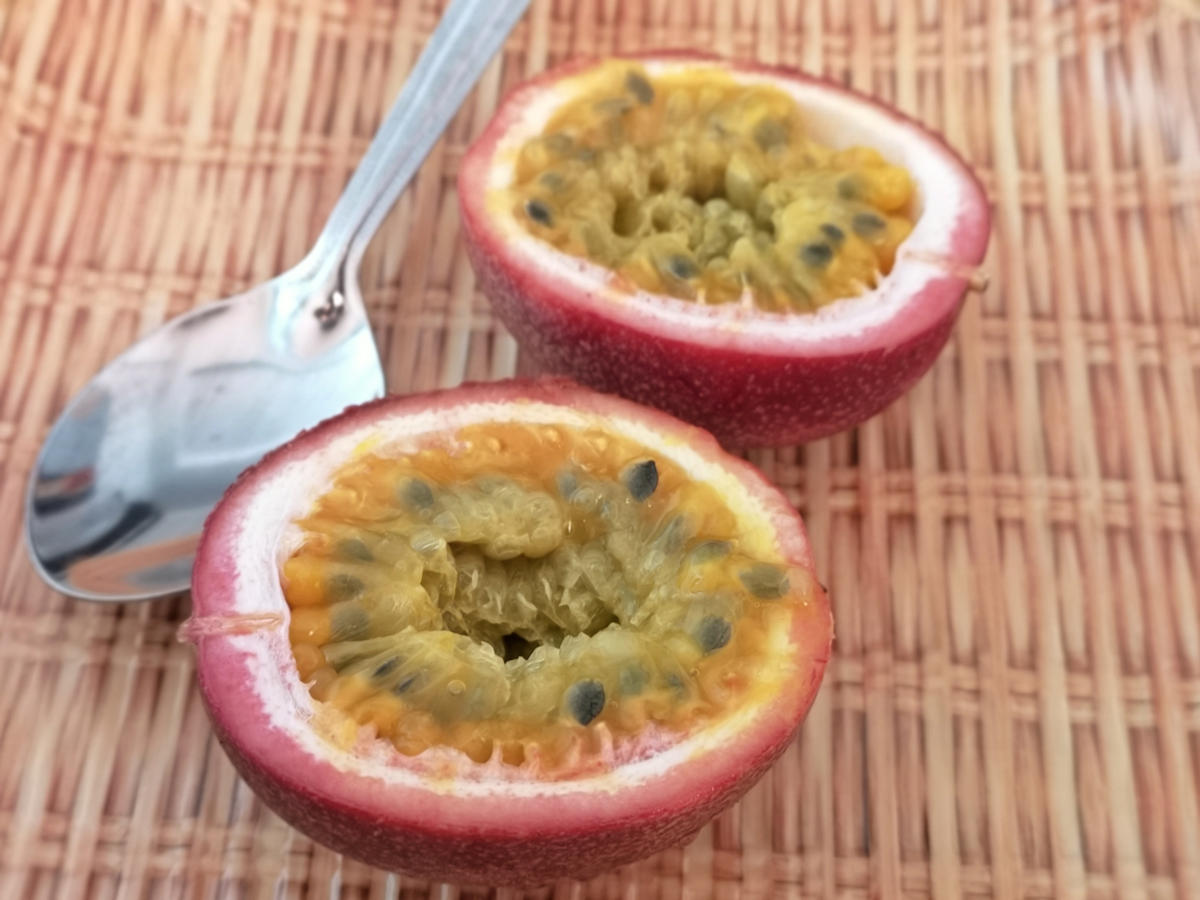
Coconut
No beach day is complete without a coconut! There's really nothing better in the world than sipping the cool coconut water from a coconut in the heat on the beach and then scraping out the soft flesh. Simply delicious and refreshing!
Incidentally, the large green fruits are unripe coconuts. They are sold here in Thailand on every corner for very little money, and you can also order them as a drink in every restaurant.
Coconut milk is extracted from the flesh of ripe coconuts and therefore has nothing to do with the delicate (and low-calorie) coconut water.
Thai name: Maphrao On
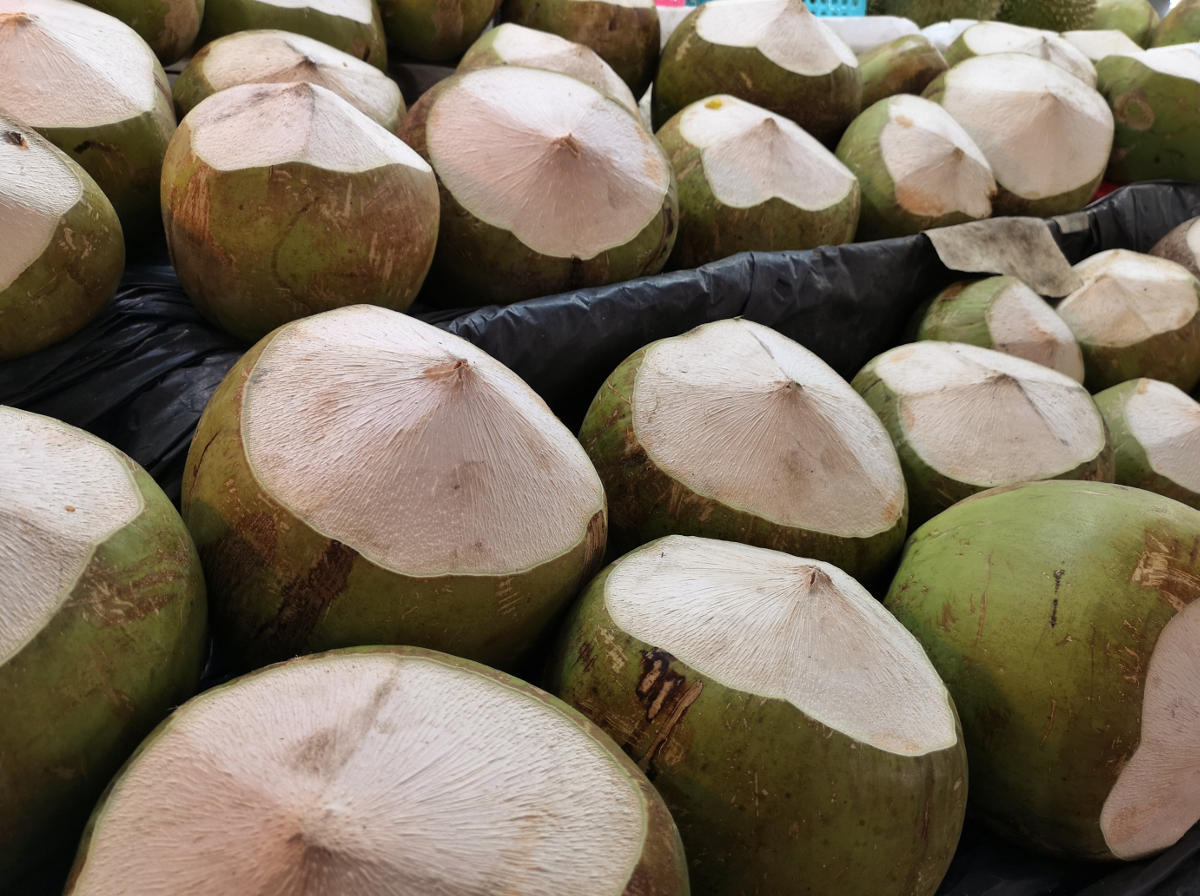
Java apple
I came across the Java apple for the very first time in Thailand. I had never seen this fruit anywhere before.
It is simply cut open like an apple to eat, has a slightly similar consistency, but is much softer to bite into without being mealy. It is somewhat watery, but very refreshing and without a strong taste of its own. Here, too, I would guess it has a slight herbal flavour, reminiscent of basil and coriander. Something like that. Um, it's best to just try it on holiday. A great fruit for hot days!
Thai name: Chompoo Daeng
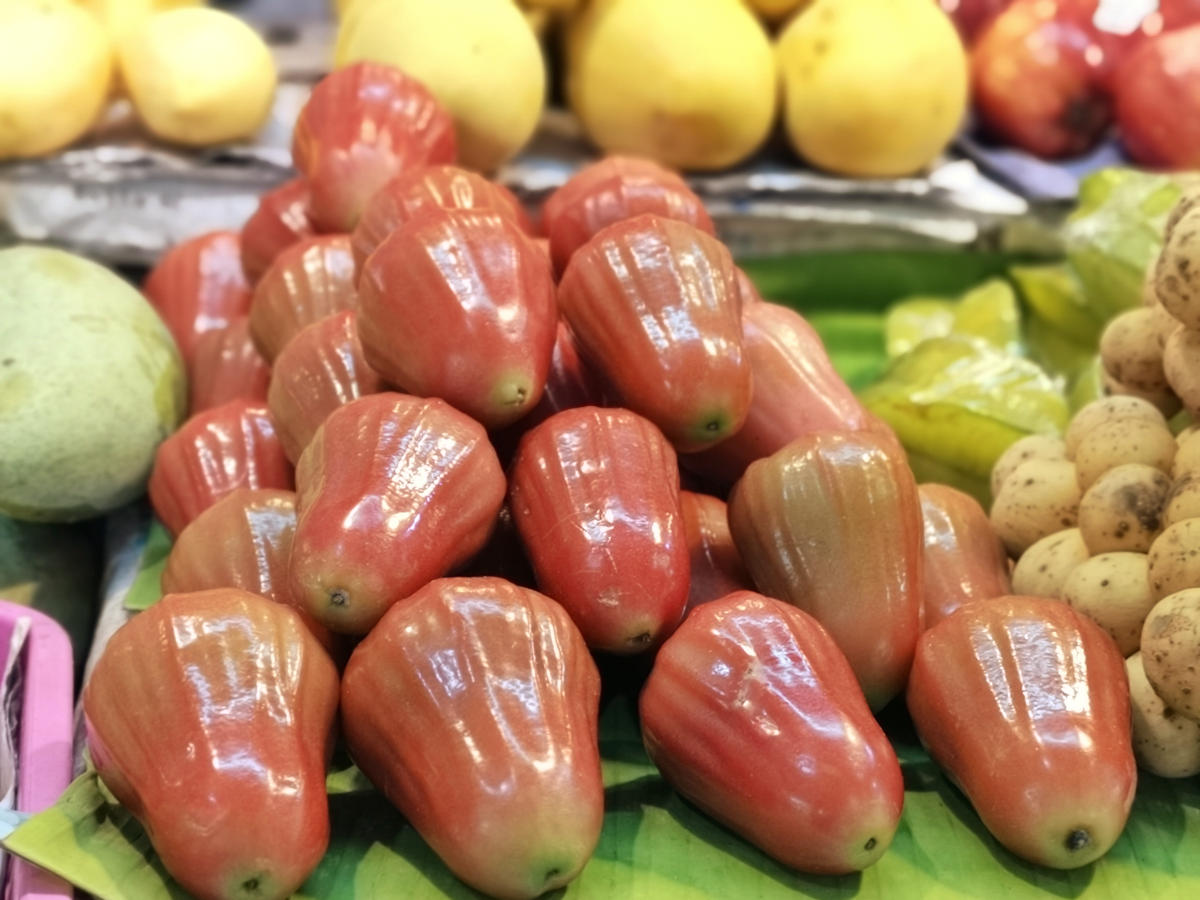
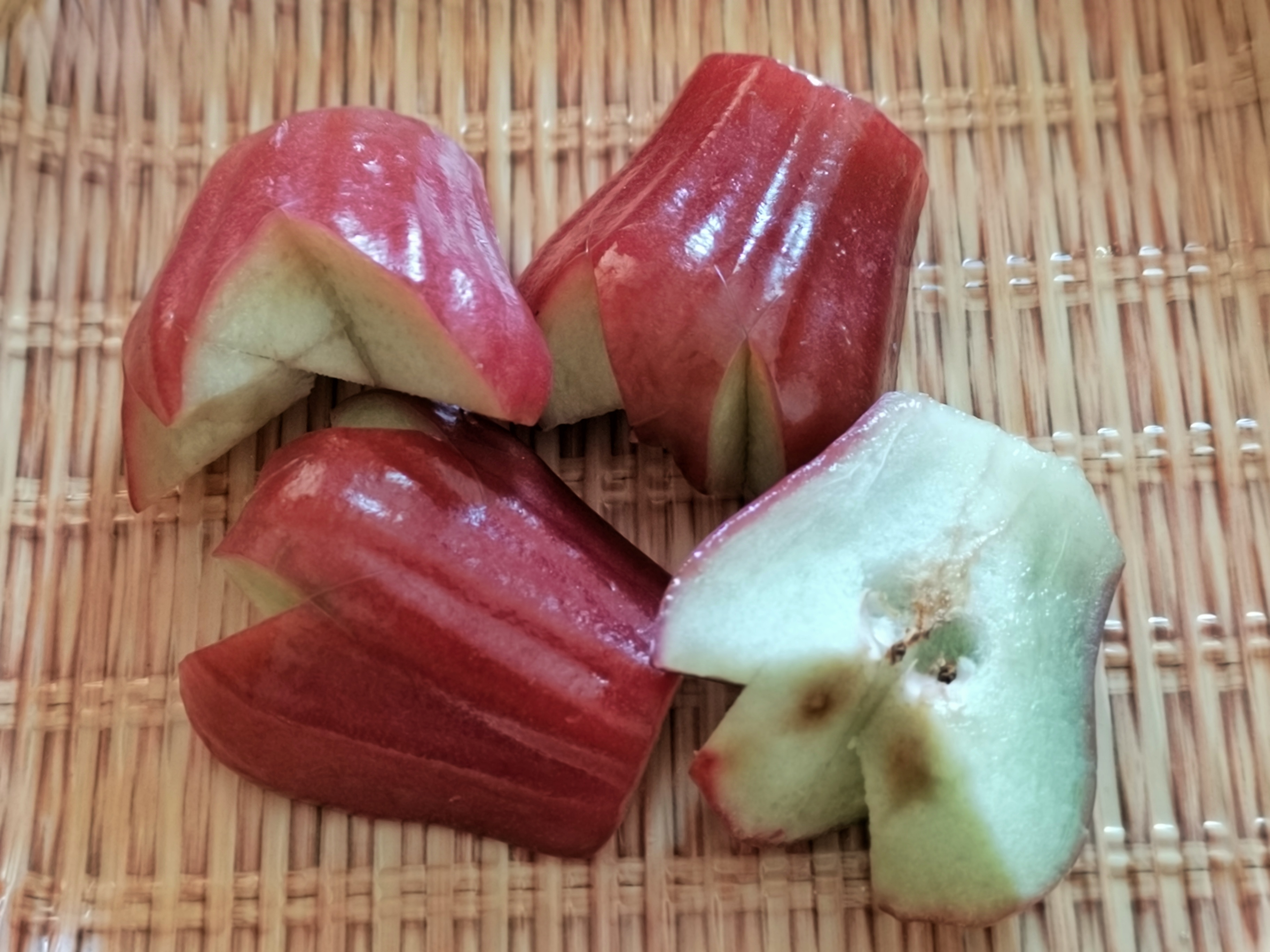
Rambutan
The rambutan immediately catches the eye in Thailand's markets and fruit stalls, mainly because of its appearance. It is about one and a half to twice the size of a lychee, has a bright red colour and a greenish, soft ‘hairiness’. It must be opened with a knife. The flesh has a lychee-like consistency, and the taste is also similar but not as intense. Inside is a seed that is not edible.
Thai name: Ngo
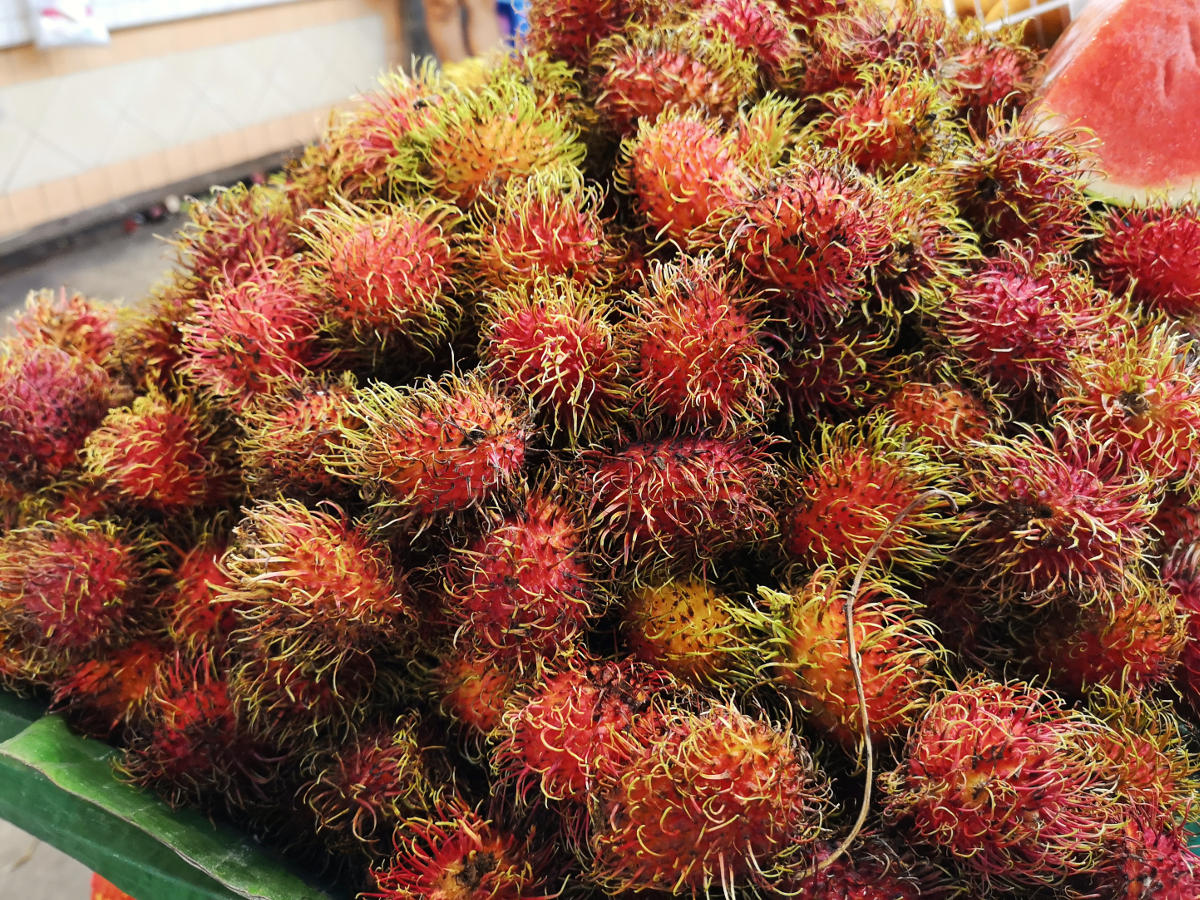

Lansi
The lansi fruit comes in two different varieties, namely Longkong and Langsat. Both are as large as lychees and grow in clusters. However, while the Langsat has a bitter-tasting seed, the flesh of the Longkong is divided into segments and has no seed.
The shell can be easily broken open with your fingernails and peeled away from the flesh. The consistency and taste of longkong are similar to those of lychee, but they have a slightly different additional taste that I would describe as earthy – almost as if they had not been washed properly and soil had been transferred to the flesh during peeling. It tastes delicious, but I would prefer lychee.
Thai name: Lam Yai
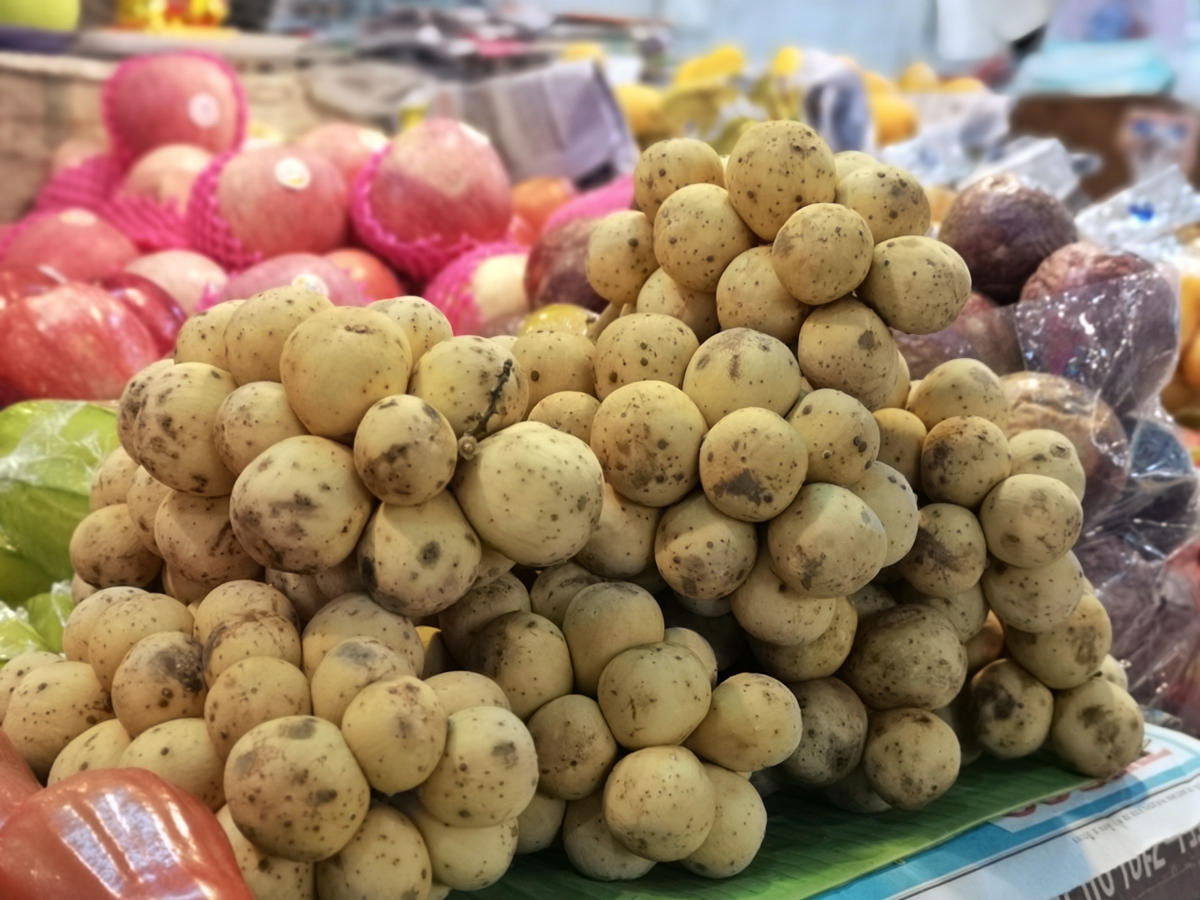
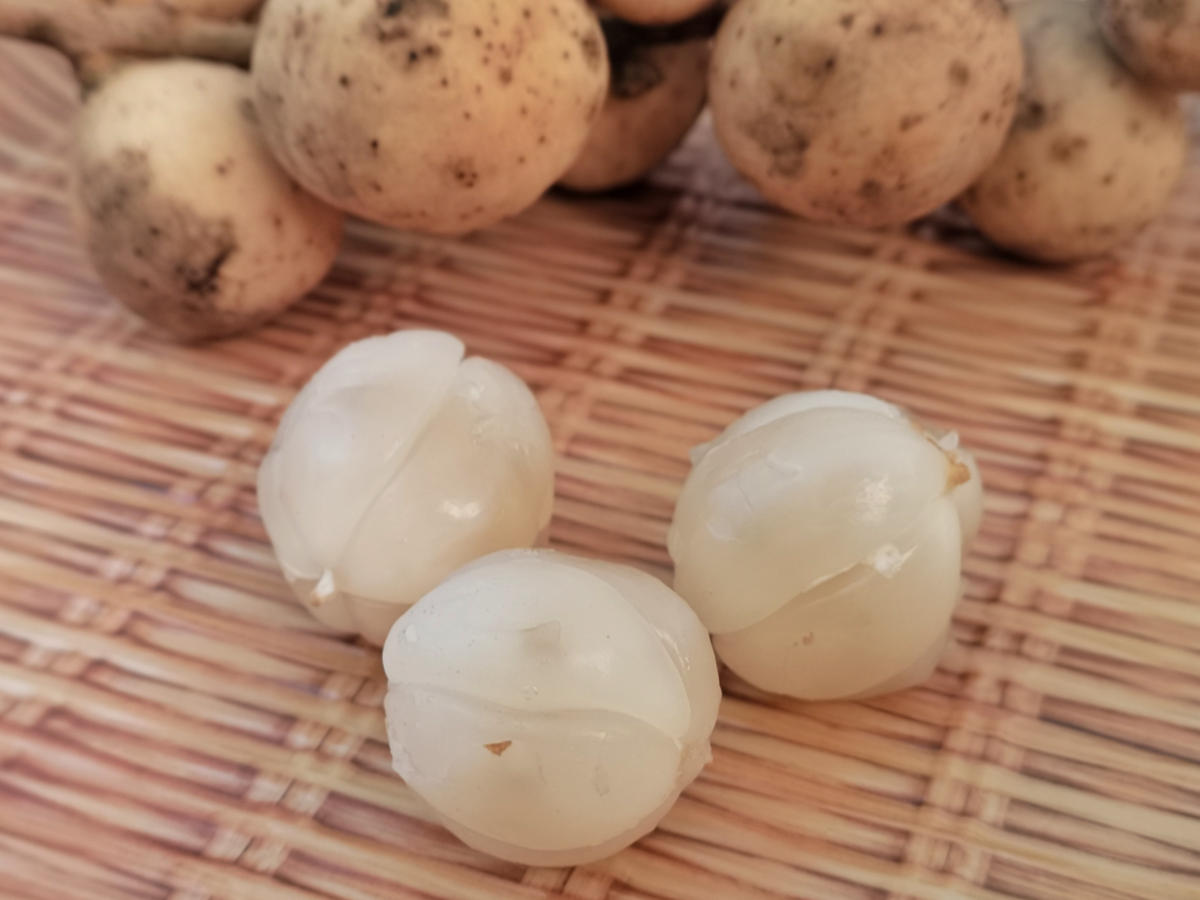
Sapodilla (brea apple)
This fruit was really a surprise for me. Not knowing what it was or what it was called, I just bought it, tried it at home and googled it.
The sapodilla is actually a South American fruit, but is now grown in tropical countries around the world. It has an inconspicuous brown skin that is quite thin. The best way to prepare the fruit is to simply cut it in half and remove the black seeds.
In terms of taste and consistency, sapodilla is truly unique. It feels almost like slightly crumbly cookie dough in your mouth and tastes much ‘richer’ than fruit normally does. I can't even describe the taste. It's not bad, but personally, it doesn't exactly tempt me to try it again. The gastronomy magazine Rolling Pin says of the taste: ‘The light orange flesh tastes sweet and is strongly reminiscent of the taste of pear, apricot with a hint of sugar melon.’ (I think that's a very kind description...)
Thai name: Lamut
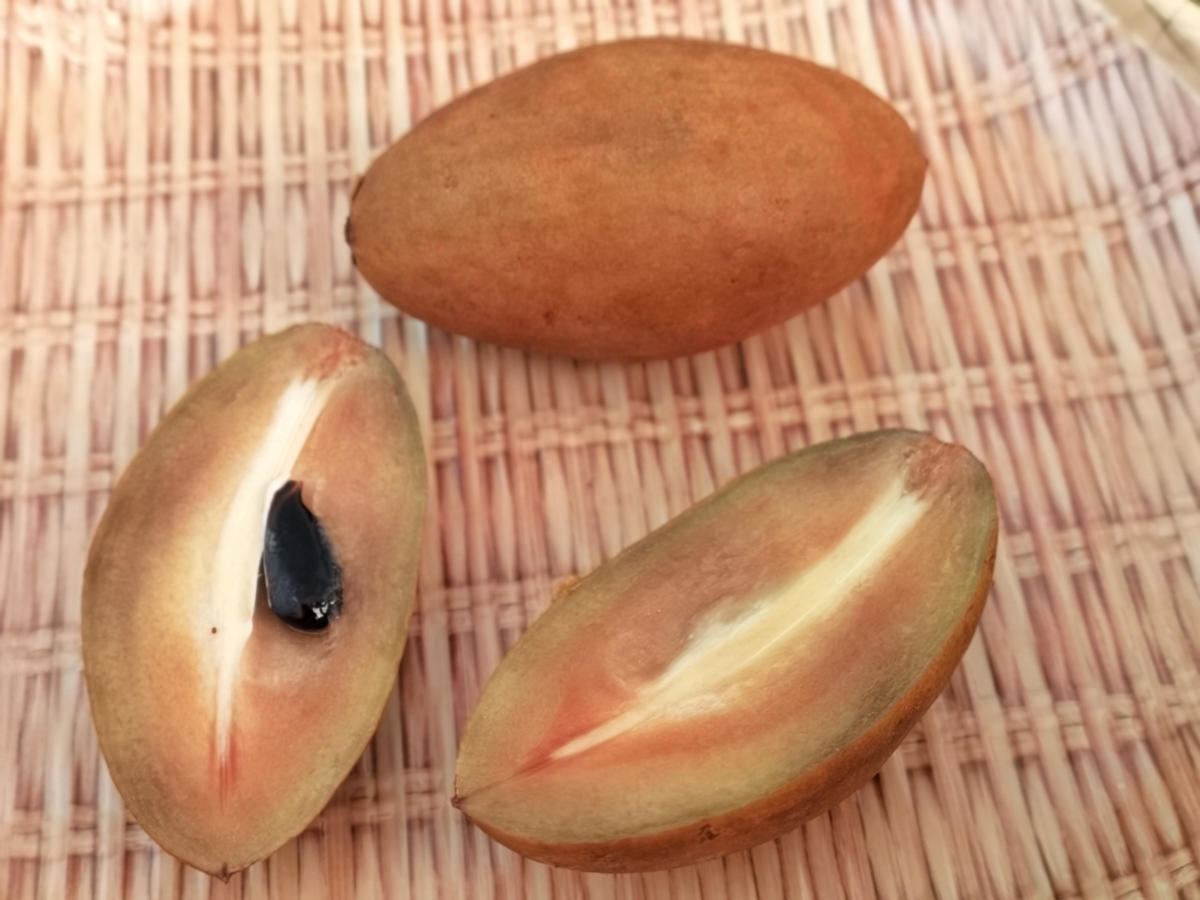
Have I forgotten any fruits?
Of course, this list is by no means complete. All the more reason for me to look forward to discovering and trying new fruits!


